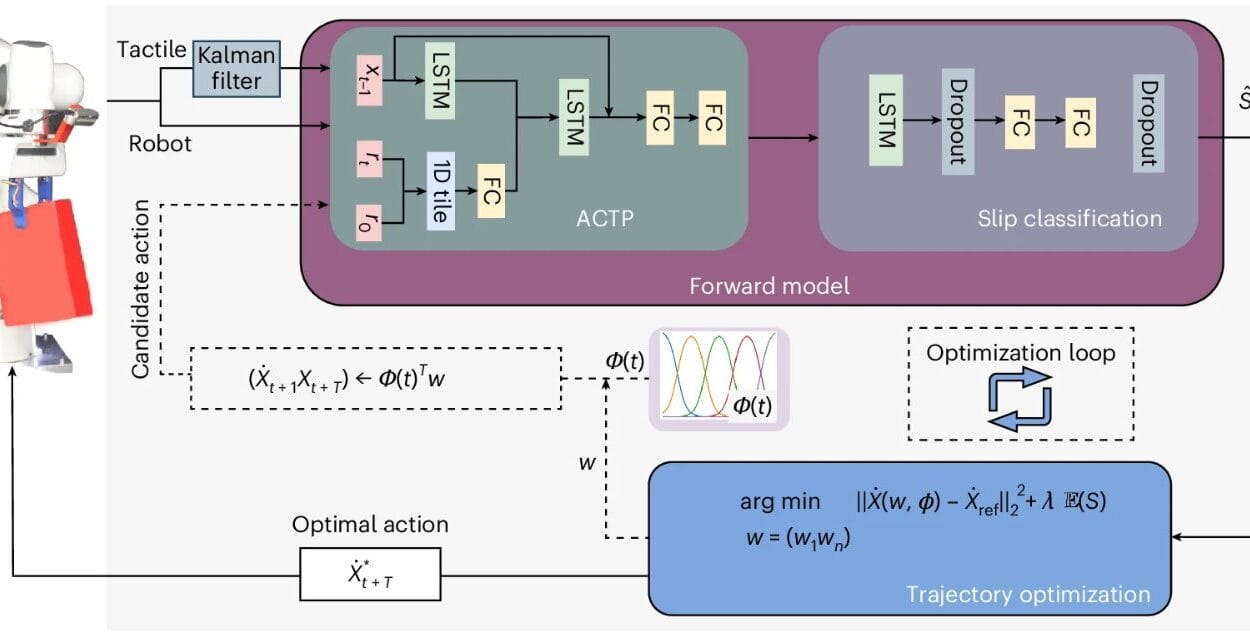Artificial Intelligence (AI) is not just a buzzword; it’s a transformative force that is reshaping industries, revolutionizing the way we work, and even changing the way we think about machines and technology. From self-driving cars to personalized recommendations on streaming platforms, AI is behind many of the technological marvels that influence our daily lives.
If you’re interested in diving into the world of AI and building your very first AI model, you’re entering a space full of endless possibilities. But, like any new endeavor, it’s important to approach it with a sense of curiosity, patience, and preparedness. Whether you’re a beginner with no technical background or someone with a little bit of coding experience, understanding the foundational principles of AI modeling will set you on the right path.
In this article, we’ll explore five key things you need to know before embarking on the journey of building your first AI model. Each of these concepts will help you avoid common pitfalls, maximize your learning, and ensure your model-building experience is as rewarding as it is successful.
1. AI Is Not a One-Size-Fits-All Solution
When you hear about AI in the media, it’s easy to get the impression that it’s an all-encompassing, magical technology that can solve any problem. While AI is incredibly powerful, it’s not always the right tool for every job. Understanding the limitations and strengths of AI is crucial before you begin developing your model.
Understanding the Right Problem
AI is at its best when it’s solving specific, well-defined problems. For example, tasks like image recognition, natural language processing (NLP), and predictive modeling are areas where AI thrives. However, it’s important to first define your problem clearly. A vague or overly broad problem can lead to confusion and frustration. So, ask yourself: What exactly do I want my AI model to do?
If you’re hoping to automate a task, like classifying images of animals, AI is an excellent fit. But if you’re looking to replicate human creativity, like writing poetry, that’s a much more complex task that requires a different approach and deeper learning techniques.
Know the Different Types of AI Models
Not all AI models are the same, and choosing the right one depends on the problem you’re solving. Here’s a brief breakdown of the main types of AI models:
- Supervised Learning: In supervised learning, your AI model learns from labeled data. For instance, if you’re training a model to identify cats and dogs in images, you’d provide a dataset with images labeled as “cat” or “dog.” Supervised learning is the go-to method for classification and regression tasks.
- Unsupervised Learning: This type of learning is useful when your data is not labeled. The model tries to find patterns or groupings in the data. Clustering and association tasks, such as market basket analysis, are great examples of unsupervised learning.
- Reinforcement Learning: In this model, an agent learns by interacting with its environment, receiving rewards or penalties based on its actions. This type of learning is often used in gaming AI or autonomous systems, like self-driving cars, where the agent learns to make decisions based on real-time feedback.
Understanding these types of models will guide you in choosing the right approach for your task. Don’t rush into building a model without first considering what type of learning process will best serve your needs.
2. Data Is the Foundation of AI Models
In AI, data is king. Without quality data, even the most advanced algorithms can’t perform well. If you don’t have sufficient data or if your data is noisy or unrepresentative, your model’s predictions will be unreliable. The first step in any AI project is to gather, clean, and prepare your data. Here’s why data matters so much:
The Role of Data in Training
AI models learn from data. The more representative, diverse, and high-quality data you provide, the better your model can generalize and make accurate predictions. For instance, if you’re building a model to predict whether a customer will purchase a product, the data should include features like past purchases, demographics, and browsing behavior.
The training data needs to be labeled properly for supervised learning. This means you must clearly define the categories or outcomes that you want your model to predict. In unsupervised learning, the data still needs to be rich enough to allow the model to identify patterns, even though no explicit labels are provided.
Data Collection and Preprocessing
Data collection is often the most time-consuming part of building an AI model. You’ll need to source data that is relevant to your problem and, ideally, from a trustworthy source. Keep in mind that real-world data is rarely perfect. You’ll need to clean and preprocess the data to ensure it’s in a usable format.
Common preprocessing steps include:
- Removing missing or incomplete data: Handling missing values, either by removing or imputing them, is essential.
- Normalizing or scaling data: Some models, like neural networks, perform better when the input data is scaled to a standard range.
- Handling categorical data: Categorical variables, like “red” or “blue,” need to be encoded into numerical values, such as using one-hot encoding.
- Balancing the dataset: If your data is imbalanced (for example, if there are many more “dogs” than “cats” in an image classification task), you may need to resample or apply weights to ensure the model doesn’t become biased.
Data Augmentation
If you’re working with limited data, especially in fields like computer vision, you can use data augmentation techniques to artificially expand your dataset. This could involve rotating images, flipping them, adjusting brightness, or even creating synthetic data. Data augmentation helps improve model robustness by simulating variations in real-world data.
Remember, the quality of the data you use is often more important than the algorithm you choose. A poor dataset will result in poor predictions, no matter how advanced the model is.
3. Choosing the Right Algorithm for Your Problem
Once you’ve collected and prepared your data, the next step is selecting the right AI algorithm. The vast array of algorithms available can be overwhelming, but the key to success lies in understanding the strengths and weaknesses of different approaches.
Key Algorithm Types
- Linear Models: Linear regression and logistic regression are simple models that work well for tasks involving continuous or binary outcomes, respectively. They are easy to interpret but may struggle with complex, nonlinear relationships in the data.
- Decision Trees and Random Forests: Decision trees break down a dataset into smaller and smaller subsets, leading to more accurate predictions. Random forests are an ensemble of decision trees, which help overcome the overfitting problem by averaging multiple trees’ predictions.
- Neural Networks: Neural networks are complex models inspired by the human brain, capable of learning nonlinear relationships. They are particularly powerful for tasks like image and speech recognition, but they require a lot of data and computational resources.
- Support Vector Machines (SVMs): SVMs are effective for both classification and regression tasks. They work well for problems where the classes are clearly separated, but they can become computationally expensive as the dataset grows.
Bias-Variance Tradeoff
In machine learning, there’s a concept called the bias-variance tradeoff. Bias refers to the error introduced by overly simplistic models (underfitting), while variance refers to the error caused by overly complex models (overfitting). The goal is to find a balance where the model captures the underlying patterns of the data without getting distracted by noise or small fluctuations.
Some algorithms, like decision trees, can easily overfit the training data, leading to high variance, while others, like linear regression, can underfit by being too simple. As you experiment with algorithms, monitor how well your model generalizes to unseen data to avoid falling into either extreme.
Model Evaluation
To determine which algorithm works best for your problem, you’ll need to evaluate the performance of your model using metrics appropriate for your task. For classification problems, common metrics include accuracy, precision, recall, and F1-score. For regression tasks, you might look at metrics like mean squared error (MSE) or R-squared.
You should also split your data into a training set and a test set (and sometimes a validation set) to ensure that your model isn’t overfitting to the training data. Cross-validation techniques, such as k-fold cross-validation, can also help improve your model evaluation.
4. Model Training and Optimization
Training a machine learning model involves feeding it data and allowing it to learn from patterns within that data. However, training is not a one-time event; it requires fine-tuning and optimization to ensure the model performs well. Here’s how to approach the process:
Hyperparameter Tuning
Once you’ve chosen your model and started training it, the next step is hyperparameter tuning. Hyperparameters are the external configurations that you set before training the model, such as the learning rate, batch size, and the number of layers in a neural network.
Finding the right combination of hyperparameters can be a challenging and time-consuming task. Techniques like grid search and random search allow you to experiment with different hyperparameter values and evaluate which configuration gives the best performance. More advanced methods like Bayesian optimization can help search the hyperparameter space more efficiently.
Regularization to Prevent Overfitting
As mentioned earlier, overfitting is a common problem in machine learning, especially when working with complex models like neural networks. Regularization techniques, such as L1 and L2 regularization, add a penalty term to the loss function to discourage the model from fitting the noise in the training data. This encourages the model to focus on the most important features and generalize better to unseen data.
Monitoring Training Progress
It’s important to monitor the progress of your model during training to ensure it’s learning in the right direction. Many machine learning frameworks provide learning curves—graphs that show the model’s performance on both the training and validation sets over time. Watching these curves can help you spot issues such as underfitting or overfitting early in the process.
5. AI Development Is an Iterative Process
Building an AI model is rarely a one-and-done process
. It’s an iterative journey, and refinement is key to success. As you build, test, and evaluate your model, you’ll inevitably encounter challenges, surprises, and moments of discovery. The process requires patience and a willingness to tweak and improve your model continuously.
Embrace Experimentation
Sometimes, models fail because the initial assumptions were wrong or the wrong features were used. That’s okay! Experimentation is a natural part of the AI development process. Don’t be afraid to change your approach or try different techniques. Each failure is a learning opportunity that brings you closer to a more effective solution.
Learn from Your Mistakes
In AI, failure is often just as valuable as success. When your model doesn’t work as expected, take the time to analyze why. Did you use the right features? Was there a problem with the data? Did you select the wrong algorithm? Understanding why something went wrong will help you avoid similar issues in the future.
Continuous Improvement
AI models are never truly “finished.” Once your model is up and running, the real work begins. You should continuously monitor its performance, especially in real-world environments, and update it as needed. AI development is ongoing—models must adapt to new data, changes in the environment, and emerging patterns in user behavior.
Conclusion: Ready to Build Your First AI Model?
Embarking on the journey of building your first AI model is an exciting and rewarding experience. By understanding these five key concepts—recognizing the right problem to solve, preparing your data, choosing the appropriate algorithm, optimizing your model, and embracing the iterative nature of development—you’ll be well on your way to becoming an AI model-building expert.
AI is not a magic bullet, but when approached thoughtfully, it’s a powerful tool that can transform problems into solutions and ideas into innovations. Start small, experiment often, and never stop learning. Your first AI model is just the beginning of an exciting journey into the world of artificial intelligence.






